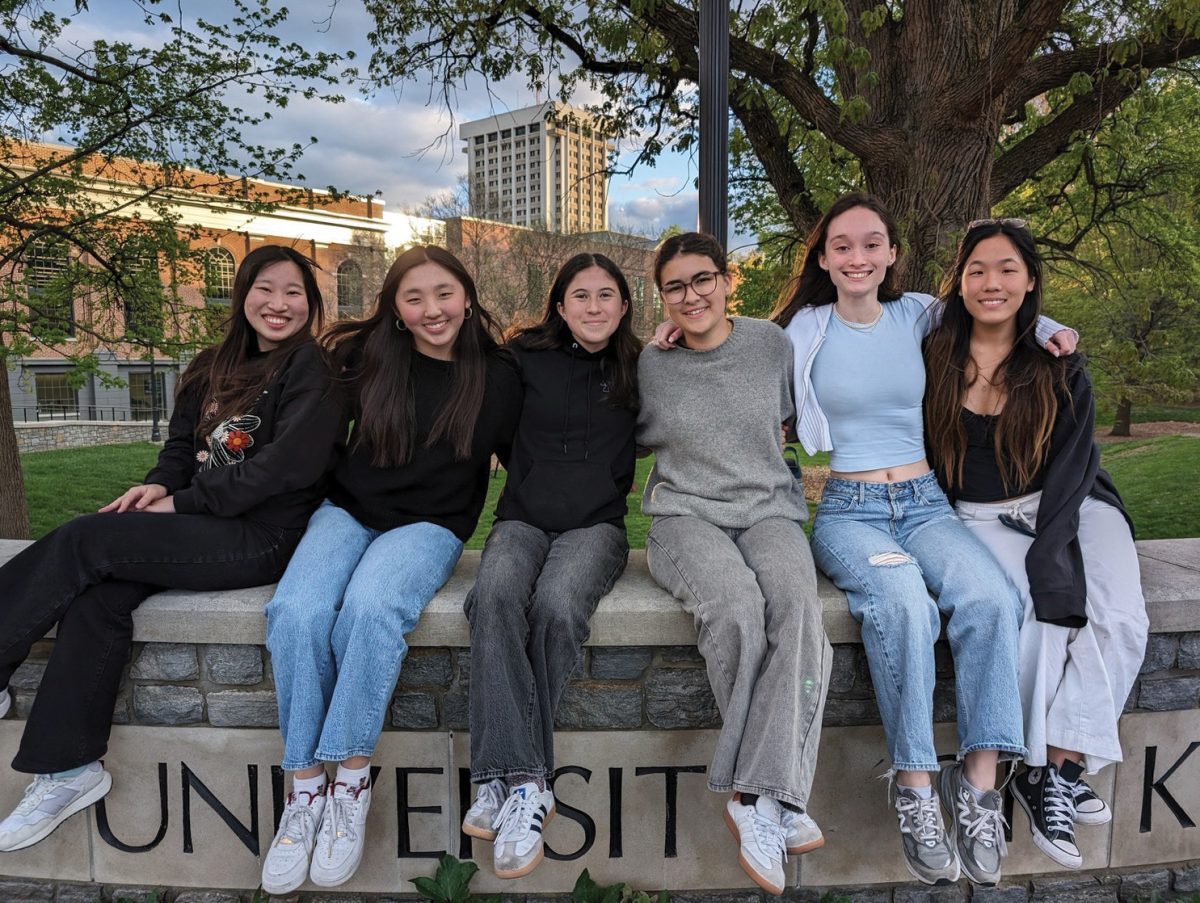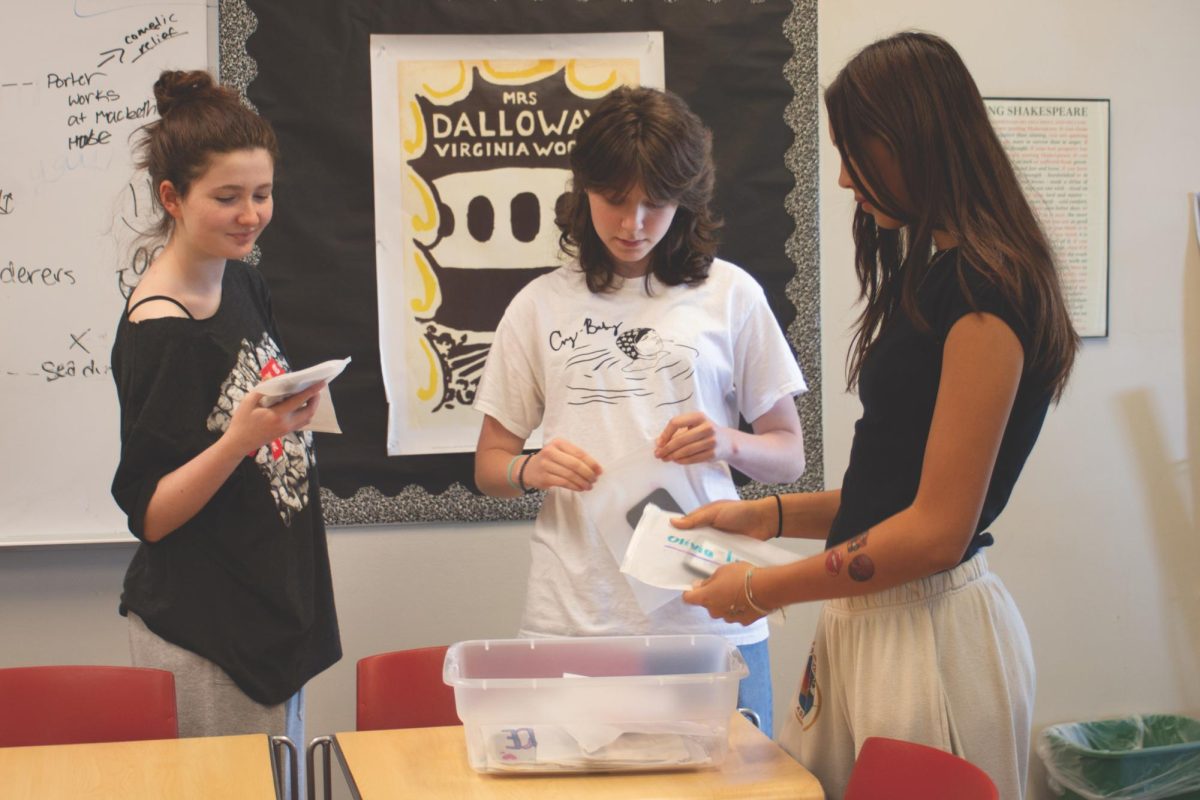by Charlotte ’19, Khloe ’18 and Car ’17
Across the United States, it has become increasingly common for high school students to take a year off, or a “gap year,” between their senior year of high school and freshman year of college.
This trend gained national attention when, in 2015, Malia Obama, daughter of then President Barack Obama, announced that she would be taking a gap year and deferring her acceptance to Harvard University. Malia, however, is only one participant in this growing trend.
According to the American Gap Association, gap-year participation in 2015 increased by 22 percent in comparison to the previous year. This rise in participation has allowed for the growth of a cottage industry that provides students with paid
experiences during their gap years.
While paid experiences are far from the only way one can choose to spend a gap year, they are particularly popular among wealthy students as they can cost up to 35,000 dollars, according to New York Times reporter Mike McPhate. The price associated with these types of gap years has caused many to view taking a gap year as something available only to wealthier students.
Dominque ’17 expressed her doubt in the paid experiences.
“I wouldn’t do a gap year if I had to pay out of pocket for it. I would rather look at study abroad programs at my college, because financial aid will cover those, and I’ll get to have a similar experience for a much lower price,” Dominque said.
While gap years are a new trend for American students, according to the International Business Times, they have been common among European students for decades. Hannah ’17, who is planning on taking a gap year next year, said that she is exploring programs geared toward British students.
“Price is definitely something I’m considering when thinking about where I take my gap year, and that is part of the reason I’ve been looking at programs for British students. Because gap years are more common there, the programs tend to be less expensive,” Hannah said. According to gapyear.com, British programs typically cost around 1,500 pounds or 1887 dollars.
American universities have taken note of this growing trend among their students as well as the benefits that the time off from an academic environment provides. Tufts University is among those who offer a gap year program to their incoming freshman class. Their program known as “Tufts 1+4,” allows their students to engage in service opportunities, both domestically and abroad.
According to the Tufts University website, the Tufts 1+4 program aims to “democratize” gap years by making them more accessible for students in a lower income bracket.
Alongside the growing industry that has driven up the price of gap year experiences, non-profit organizations were founded in order to ensure that low-income students are included in these types of experiences.
One such organization, Carpe Mundi, has stated on its website that it believes gap years would help to lower the dropout rates among low-income students because gap year experiences help to increase students’ motivation by giving them a sense of purpose.
Siegel said that she would probably spend the summer before her gap year experience working in order to help pay for her gap year. Cami ’17, who is considering taking a gap year next year, chose to apply for the Congress-Bundestag Youth Exchange Program, funded by the U.S. State Department, providing each of the participants with a full scholarship.
“Part of the appeal of this program is that it is pretty structured and…I wouldn’t have to pay for anything through the program. If I didn’t go [with this program], I probably wouldn’t take a gap year,” Cami said.
According to Cami, the low price also made the program more appealing to her parents, who didn’t like the idea of her embarking on an expensive gap year program.
Whilesome gap year programs are expensive, many students, like Siegel, view them as invaluable experiences that are well worth the price.
GAP YEAR OPTIONS
With the increasing popularity of gap years in the United States, available programs have become more diverse than ever before. Some options include a semester at sea, a year abroad, a cultural study and language immersion opportunities.
When taking a gap year, there is no recommended program that the students should take over any other. Jeff Schiffman, director of admission at Tulane University, believes that gap years are only as good as the students who go on them.
“As long as students are passionate about their subject, we [Tulane University] support their decision to take gap year,” Schiffman said. He also noted that colleges assess the quality of a student’s gap year by how involved they are in it because it shows that the student is enthusiastic about working hard.
Co-Director of College Counseling Michael Heeter agreed and said he had two students take a gap year who did not take part in a paid program.
“You shouldn’t have to spend money, that’s not the point of the gap year,” Heeter said.
For students who want a more structured program, resources for paid programs are readily available.
The website “USA Gap Year Fairs” separates gap years into five different categories: academic, traveling, community service, internship and work experience or environmental conservation. Pricing for the programs can range between 5,000–30,000 dollars, and some programs let students apply for scholarships to offset costs.
Academic gap year programs let students explore the world and enjoy different cultures, while taking classes and focusing on a specific area of study. Adventure gap year programs let students often feature outdoor adventure, while also learning about the environment. Ridge Mountain Academy, for example, allows students to spend a year learning in Montana and doing mountain sports, such as Skimo racing, Nordic skiing and climbing.
A community service-based gap year consists of learning about new cultures, helping build houses or community buildings and engaging with local communities. For instance, through the Rustic Pathways program, students can go to Cuba and help with mangrove restoration to improve the ecosystem.
Yet another way to approach a gap year is to intern or work. One program, called “Dynamy,” lets students choose from a multitude of internships that aren’t common among gap year options, such as interning at a rock climbing facility. Many of the internships are an independent study, which allows the student freedom to venture into an area of interest. A study by “Year Out Group,” a company that focuses on gap year statistics, found that 30 percent of students who take a gap year travel alone and conduct research for an independent study.
Environmental conservation programs teach students about the negative factors affecting the environment they are staying in, and how they can fix those issues by using their knowledge and personal skills. If students are interested in environmental conservation, they can go to the Expedition Education Institute, where students take a semester abroad and visit different countries, become ecological leaders by gaining the skills to educate their communities on ecological issues and learn about the natural world.
Schiffman recommends gap years for students to explore their interests.
“Taking a gap year gives [students] a chance for growth and a real opportunity for totally different perspective than they had in high school. And it gives students the option to test out the water and see what they want to major or minor in,” Schiffman said.
Marlborough Opinions
Rosie ’17 said she always considered a gap year and is now fairly certain she will choose that option after graduation. Rosie said she believes it would benefit her to take a break from academics. She hopes to learn German or a Scandinavian language, as she wants to major in European language and literature studies in college. Rosie also said she hopes to spend a gap year gaining work experience or visiting another country.
“I feel like I’d be rushing into something without knowing what I’m getting into, so for some people you need that constant drive, for me; I need something different before I figure out what I’m going to do for the rest of my life,” Rosie said.
According to The Gap Year Advantage: Helping Your Child Benefit from Time Off Before or During College by Karl Haigler and Rae Nelson, the top three reported results of a gap year are students gaining a better understanding of their identities, the world and cultures around them, or their skills.
12th Grade Dean and mathematics instructor Alison Moser suggested that a gap year can provide students with new knowledge and unique opportunities and that any experience during a gap year is valuable, even if it does not directly connect to what a student ends up studying.
“Those who’ve been fortunate enough to experience a gap year very often learn a great deal about themselves, and therefore, their college experience is more enriched,” Moser said.
Heeter said that although he supports students who want to take a gap year before college, he cautioned students, saying that gap years do not increase a student’s chance of getting into colleges, as the student’s grades and test scores will not improve during his or her year off.
“It should be an internal, personal journey that one takes, not because they think there’s going to be some sort of outcome from it,” Heeter said.
Despite the many benefits of taking a gap year, some students fear they may take one and then not want to return to a potentially stressful academic environment. Students may also feel that taking a gap year is a risky choice because it diverges from the traditional path of attending college immediately after high school.
“I want to go to college directly after high school because I’m worried that if I take a gap year I might become distracted and not want to go back to school,” Sophie ’19 said.
Uncertainty may keep some students from pursuing a gap year, as they may worry about wasting time following something they are not interested in.
Students like Mia ’18 may choose not to take a gap year because they are excited about college and do not feel they need a break. Coates said that she believes she can find all of the community service and social opportunities of a gap year in college and that going to college will give her more opportunities and freedom.
“I feel like college is a place of new experiences, and I am pretty confident about what I want to pursue,” Mia said.
For those who feel this might be the choice for them, there are a lot of resources to help. Parents, college counselors and teachers can all give input on whether a gap year would be right for a particular student.
Moser added that she believes gap years can be a crucial step by inspiring student’s decisions about careers and college.
“The life experience [of a gap year] helps point you in the direction, be inspired by something and then follow that,” Moser said.












